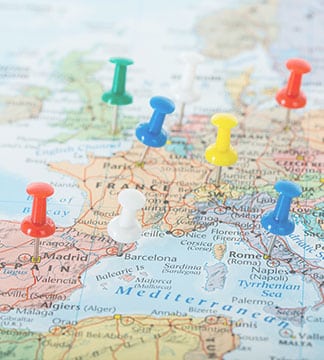
A few weeks ago, we presented the global pharmaceutical market review. This time, we would like to update you on trends in EC Europe and the Baltics in particular.
The impact of War
First and foremost, the war in Ukraine is having a significant impact on the region. Before the War, we had five main political themes impacting the European landscape in 2022: digital transformation in Health Care, patient access to innovation, addressing product shortages, the rising importance of ESG (Environmental, Social, Corporate Governance), and improving the security of supply.
After the War started, the Ukraine crisis exacerbated inequalities. Shortly, issues already apparent will be highlighted and enhanced. We are already witnessing the demand spike in Eastern Europe, increasing costs and clawbacks to manufacturers, followed by rising costs to surrounding countries and disrupting clinical trials.
Inflation and energy cost are rising sharply across most major markets, which will be felt across the industry. Furthermore, we are witnessing the leave of Western companies: the first multinationals (Bristol Myers Squibb and Reckitt) left the market, transferring their businesses in Russia to 3rd parties. Likely, others will follow.
Costs are rising
In addition, we are facing changes in pharma treatment and launches. It becomes more costly and focused on individuals – specialty is outgrowing traditional and is now greater than half of the market by value in many European countries.
If talking about major drivers of pharmaceutical market growth to 2030, oncology remains the dominant therapy area. Also, cell, gene and RNA are at the frontier of innovation and applicable across multiple therapy areas. The recent trend remains, as digital health is taking an increasingly central role. In addition, areas of high-unmet need, e.g. Alzheimer’s, Parkinson’s and mental health disorders, present a moment of opportunity.
Recovery and resilience (RR) will significantly impact Health Care budgets and developments. The RR package currently has an overall budget of 672.6 billion euros, 312.6 of which are in the form of grants to be implemented by 2026.
Baltics market pulse
Baltic markets have grown over the last five years (+8,3%). The growing categories are Rx specialty +16% and OTC +16%.
Still, there is a significant gap in drug consumption between Lithuania, Latvia, Estonia and Western European countries. Overall, the political environment and demographic trends (especially ageing and richer society) are favourable in all countries. However, there is a 4% population loss in LT and LV due to a negative net migration rate and low fertility rate.
Overall retail market value is ~1.88 bn EUR in the Baltics. However, the inflation rate is the highest in at least ten years and keeps growing.
What is unique about the Baltics?
The Baltic market distinguishes by “chainification”: almost all big chains have their brands and develop new products. In Lithuania big part of private labels are not reported by distributors. Most chains have online pharmacies.
One more distinction is that the CH market in Baltics is highly developed, and consumers most likely choose a visit to the pharmacy vs a visit to the doctor’s office. Also, approximately 40% of all interactions with pharma representatives are expected to happen via digital channels.
Forecast indicates recovery trend for the all market by +11,3% in 2022 and +4,5% in 2023. Market prognosis for Lithuania shows growth from 4,8% to 6,5%, for Estonia from 5,5% to 9,1%, and Latvia from 1,5% to 3,1% in 2023.
Based on the IQVIA report, 27th of September 2022.
